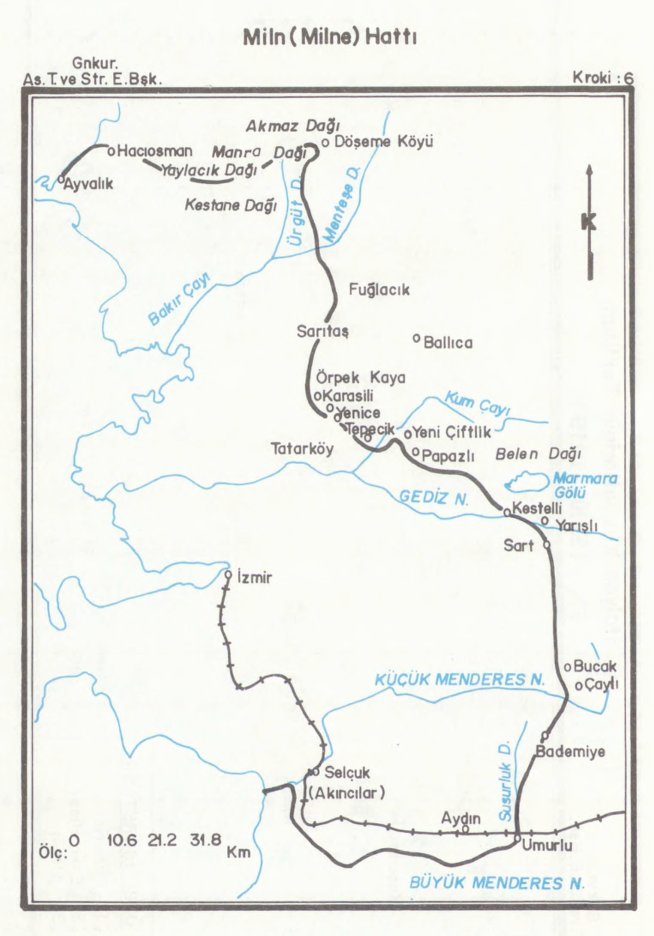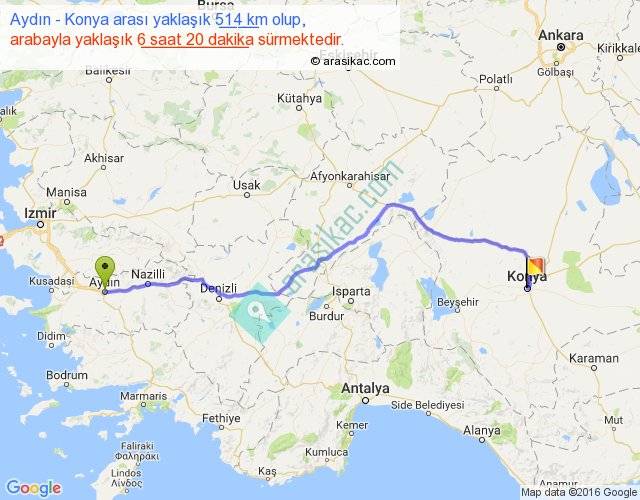//Ed. note: After the Greek occupation of Izmir
began on 15 May 1919, Greek forces began to
move toward the interior in various directions.
Aydın, to the southeast of Izmir, was entered by
Greek troops on 27 May and fighting and burning
continued for the next month or so.//

British Field Marshall George Milne drew this line
to limit Greek advances into Anatolia but in reality
its viability was short-lived, as Greek forces crossed
the line many times and 'officially' in July 1920 to
invade western Anatolia.
Aydın occupation - July click here for a recent
TNT report about a French officer's comments
regarding the Greek occupation of Aydın.
Greek troops entering Aydın on 27 May 1919.
The Commander of the 12th Army Corps (Konya) has sent an account
of the calamitous events in Aydın, as seen and heard by retired official
Talat Bey, who was among the many officials who have fled to Konya
via Muğla and Denizli because of the atrocities perpetrated by the
Greeks in Aydın. At the time of these events, Talat Bey was living in
the girls school on Topyatağı Avenue in Aydın:
"On 27 May 1919, the city of Aydın was occupied by three or four
Greek battalions. After 10 days, the occupation force headed toward
Nazilli and Denizli but en route they were ordered to return to Aydın.
During these troops' departure from Nazilli they took many prisoners
and murdered Moslems they encountered on the road."
"A portion of the occupation forces that gathered in Aydın was preparing
to go to Izmir when the appeals the local Greeks sent to Izmir and
Athens to have them stay in Aydın were approved. As a result, the
occupation force in Aydın began to enlist local Greeks and about 1,000
Efzone soldiers were brought into Aydın from the periphery to increase
troop strength. As these Efzone soldiers headed toward Aydın they
stole cattle and other possessions from the Moslem villages."
"In the middle of June, the Greek occupation commander of Aydın issued
a proclamation saying that anyone caught outside after evening would be
executed. Consequently, many shops shuttered even during the day,
causing many people to die from hunger and thirst. More Moslems
were executed during the nights when soldiers would come knocking
on doors, saying 'the commander wants to see you.' Of course, since
everyone else was hiding in their homes, these murders went unseen
by anyone else."

"On 20 June 1919, the Greeks purposely set fire to the Sipahi Market and
the flea market, spreading powdered inflammable material to increase
and extend the fire. As a result, all of the Moslem neighborhoods burned.
However, the wind changed and the fire engulfed the Greek quarter, as
well, despite the Greek efforts to tamp down the flames. Greek soldiers,
quartered near the Moslem neighborhoods, killed many Moslem men,
women and children as they tried to flee their burning homes."
"A few thousand Turkish fighters who got word of this atrocity engaged
the Greek forces in a battle on 30 June 1919 in the vicinity of the
Menderes Bridge and the fighting continued until midnight. On the
morning of the holiday, 1 July, the Greeks were forced to abandon their
cannon and retreat. The Turkish fighters pursued them as far as
Topyatağı (a high point above Aydın)."
"On 3 July, a reinforced contingent of Greek forces occupied Aydın
once again, prompting the remaining populace to flee naked toward
Nazilli. Those who couldn't get away were executed by the Greeks.
Teenage Moslem girls were given to the Greek populace to work as
maids. About 70% of Aydın was burned down in the course of these
events and it is estimated that the value of the damage is at least
4 million francs."
((Signed)) 12th Army Corps Commander (Konya)
//END//

Hiç yorum yok:
Yorum Gönder